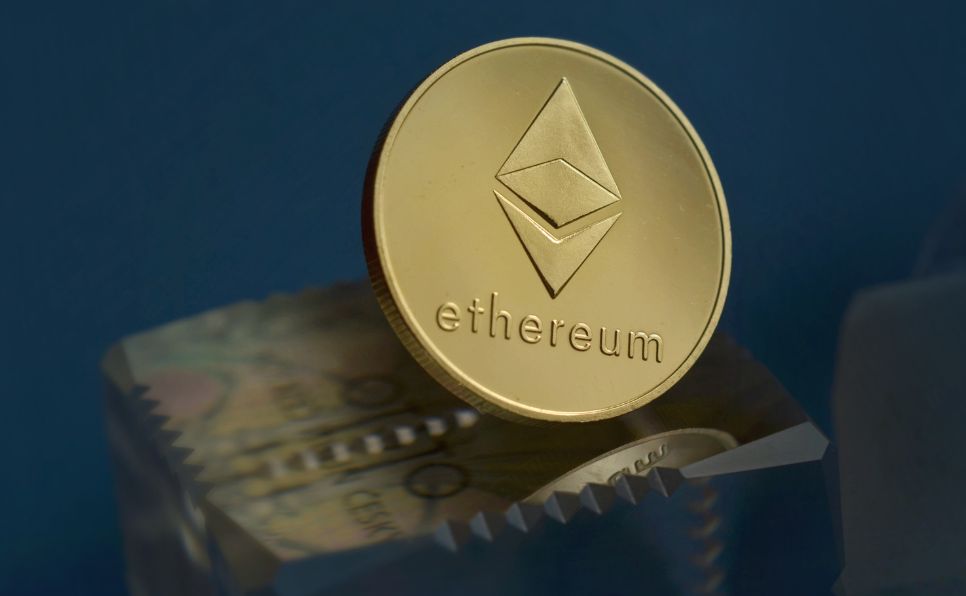Ethereum 2.0 is an upgrade to the Ethereum blockchain network, the native cryptocurrency of which is Ether (ETH). The upgrade promises to be more scalable, more secure, and more sustainable than the original. Before we dive in any further, let’s quickly discuss Ethereum itself.
What Is Ethereum?
Many people think of Ethereum as the cryptocurrency giving Bitcoin a run for its money, but Ethereum actually isn’t a cryptocurrency. Ether is the coin those people are thinking of. Ethereum is the blockchain network on which Ether lives.
Yes, the distinction is a little confusing. But it’s an important distinction to make because Ethereum is much more than a network for Ether. “It’s the world’s programmable blockchain” complete with its own programming language, Solidity.
As a programmable blockchain, Ethereum isn’t limited to just sending or receiving Ether. Instead, the Ethereum network acts as a marketplace where you can find online communities, art, games, apps, and of course, financial products and services. Initially, the primary purpose of Ether was simply paying for such goods and services on the Ethereum network.
Like Bitcoin, Ethereum uses proof of work (PoW) processes to record and confirm transactions. These proofs can be performed by a network of nodes, which can be anything from a cell phone to an industrial-sized server farm. If you decide to run a node, you’re rewarded with Ether for doing so.
Proofs of work require an immense amount of computing power. So don’t expect to get rich running one off your cell phone. To earn any sizable amount of Ether from running a node, you need an incredibly powerful computer, or several. Plus, the electricity that these nodes consume takes a big chunk out of those profits and has a sizable impact on the global environment. In simpler terms, running a node on Ethereum requires substantial resources, both in terms of computing power and energy consumption. It’s not a task that can be accomplished easily or without considering the environmental consequences.
In Layman’s Terms…
Ethereum is a database that can hold any kind of information. It was designed with the goal of giving developers a platform to create and release decentralized applications (dapps) and smart contracts. The cryptocurrency Ether was created mainly as a means of paying for these dapps and other products and services on the Ethereum network. And the processing power required to confirm transactions is slowing down the network and becoming an environmental concern.
What Is Ethereum 2.0?
In late 2020, Ethereum overtook Bitcoin to become the most actively used blockchain in the world. As exciting as this news is, the network’s growing popularity has resulted in slower transaction speeds, larger storage requirements for nodes, and spiking energy consumption.
Ethereum 2.0 includes a variety of upgrades that will allow the network to manage the current and future usage more effectively. Proof of stake (PoS) confirmations are central to these upgrades.
Rather than requiring overpowered computers to confirm transactions, PoS blockchains provide the coins on the network with the power to confirm transactions. So with ETH 2.0, you can “stake” your Ether to confirm transactions. But while your Ether is staked, you won’t be able to use it for anything else.
However, you will be earning Ether as a reward for confirming transactions. The larger a stake pool is, the greater its chances of confirming a block of transactions and earning Ether. If you don’t want to run your own stake pool, you can lend your Ether out to larger stake pools that will pay you interest for doing so. If you need your coins, simply pull them out of the pool.
In addition to rewarding you for holding Ether, the PoS blockchain also uses a tiny fraction of the power required by the PoW blockchain. In fact, it should only use 0.05% of the electricity, or less.
Sharding chains is another way that Ethereum 2.0 will improve upon the original. Rather than requiring every node to verify every piece of data added to the blockchain, each node will only need to verify a portion (a shard) of the data. “Sharding” refers to the division or splitting of the blockchain into smaller units. Currently, in Ethereum 1.0, every node on the network has to process and validate every transaction and smart contract execution, which can slow down the overall speed and efficiency of the network as it grows. Sharding aims to solve this scalability issue by distributing the workload across multiple shards. This process will further reduce electricity consumption and significantly improve the speed of transactions. With sharding, Ethereum 2.0 is expected to have the capability to process a much larger number of transactions per second compared to Ethereum 1.0. This scalability enhancement opens up new possibilities for decentralized applications (dapps) to handle higher volumes of user interactions, making Ethereum more practical for real-world use cases such as decentralized finance (DeFi), gaming, and more.
These are just two of the many upgrades that Ethereum 2.0 will bring. If you want to learn more about them or want to check out some of the dapps available on the network, visit Ethereum’s site.
Will Ethereum 2.0 Replace Ethereum?
Yes, Ethereum 2.0 is set to completely replace Ethereum. But don’t worry, your existing Ether will transition to the new network with action required on your part. However, if you like the idea of staking your Ether, check out the Eth2 Launchpad.
When Will Ethereum 2.0 Launch?
Ethereum 2.0 will launch in phases.
- Phase 0, The Beacon Chain, was already launched in December of 2020, bringing Beacon Chains online and implementing the PoS consensus mechanism.
- Phase 1, The Merge, is expected to roll out later this year. This part of the process will merge the existing Ethereum network with the new PoS system. In doing so, Ethereum will say goodbye to the power hungry PoW system.
- Phase 2, Shard Chains, is planned for 2022 and will make it possible for dapps to consolidate (“roll up”) multiple transactions before submitting them to the blockchain. Doing so will reduce the amount of data needed for each transaction. With all of the other upgrades already in place, the network is expected to be able to process 100,000 transactions every second.
In Summary…
Ethereum 2.0 represents a significant upgrade to the Ethereum blockchain network, addressing the challenges of scalability, security, and sustainability that the original Ethereum faced. While Ethereum is often associated with its native cryptocurrency, Ether (ETH), it is essential to recognize that Ethereum is more than just a platform for digital currency transactions.
As a programmable blockchain, Ethereum provides a platform for developers to create decentralized applications (dapps) and smart contracts. Initially, Ether served as a common form of payment for goods and services on the Ethereum network. However, the growing popularity of Ethereum has led to slower transaction speeds, increased storage requirements, and environmental concerns due to the energy consumption of the proof of work (PoW) consensus mechanism.
Ethereum 2.0 introduces significant upgrades to address these challenges. One of the central features is the transition from PoW to proof of stake (PoS) consensus. With PoS, users can stake their Ether to confirm transactions, earning rewards in the process. This shift significantly reduces the energy consumption required for transaction confirmation and allows for greater network efficiency.
Another improvement in Ethereum 2.0 is the implementation of sharding chains. This approach divides the blockchain into smaller parts called shards, allowing each node to verify only a portion of the data. By reducing the amount of data that needs to be processed by each node, sharding chains enhance transaction speeds and further decrease energy consumption.
Ethereum 2.0 will be rolled out in multiple phases. Phase 0, The Beacon Chain, has already been launched, establishing the PoS consensus mechanism. Phase 1, The Merge, is expected to be implemented later this year, integrating the existing Ethereum network with the new PoS system. Finally, Phase 2, Shard Chains, is planned to roll out in the next year, enabling dapps to consolidate transactions while significantly increasing the network’s capacity.
While Ethereum 2.0 will replace the original Ethereum network entirely, the transition will be seamless for users, and their existing Ether holdings will carry over to the new network. The launch of Ethereum 2.0 signifies a significant milestone in the evolution of Ethereum, addressing its limitations and paving the way for a more scalable, secure, and sustainable blockchain ecosystem.
As Ethereum continues to evolve and expand its capabilities, it remains a pivotal platform for developers, users, and businesses looking to harness the power of decentralized applications and smart contracts. With Ethereum 2.0, the network is poised to unlock even greater potential, providing a robust foundation for the future of blockchain technology.
These incredible improvements have us incredibly excited about Ethereum, cryptocurrency, and blockchain technology in general. If you’d like to add some Ethereum to your wallet, you can buy Ethereum with a credit card right here on our site, Or visit a Bitcoin/Ethereum ATM to pay cash for your Ethereum.




